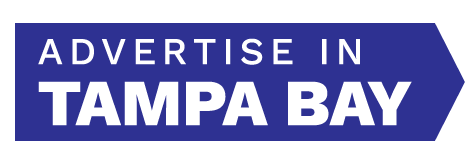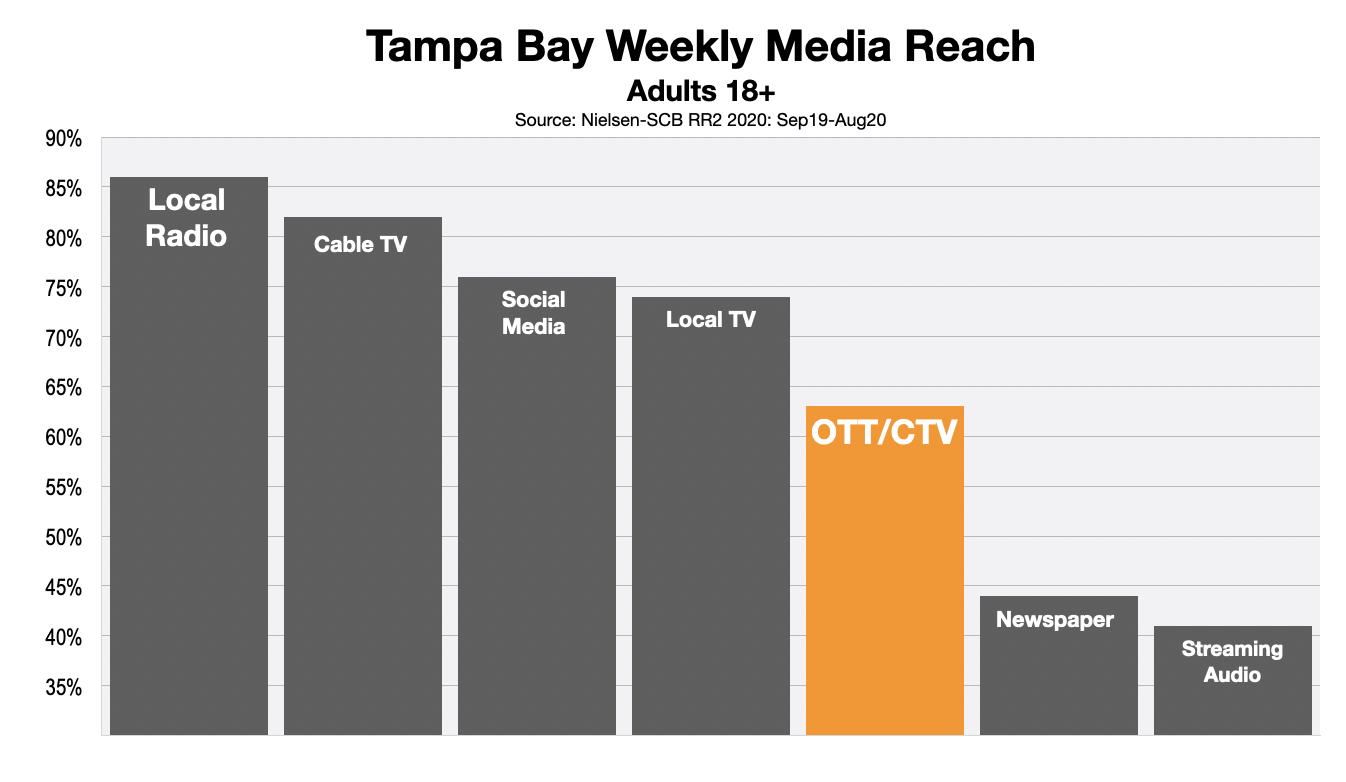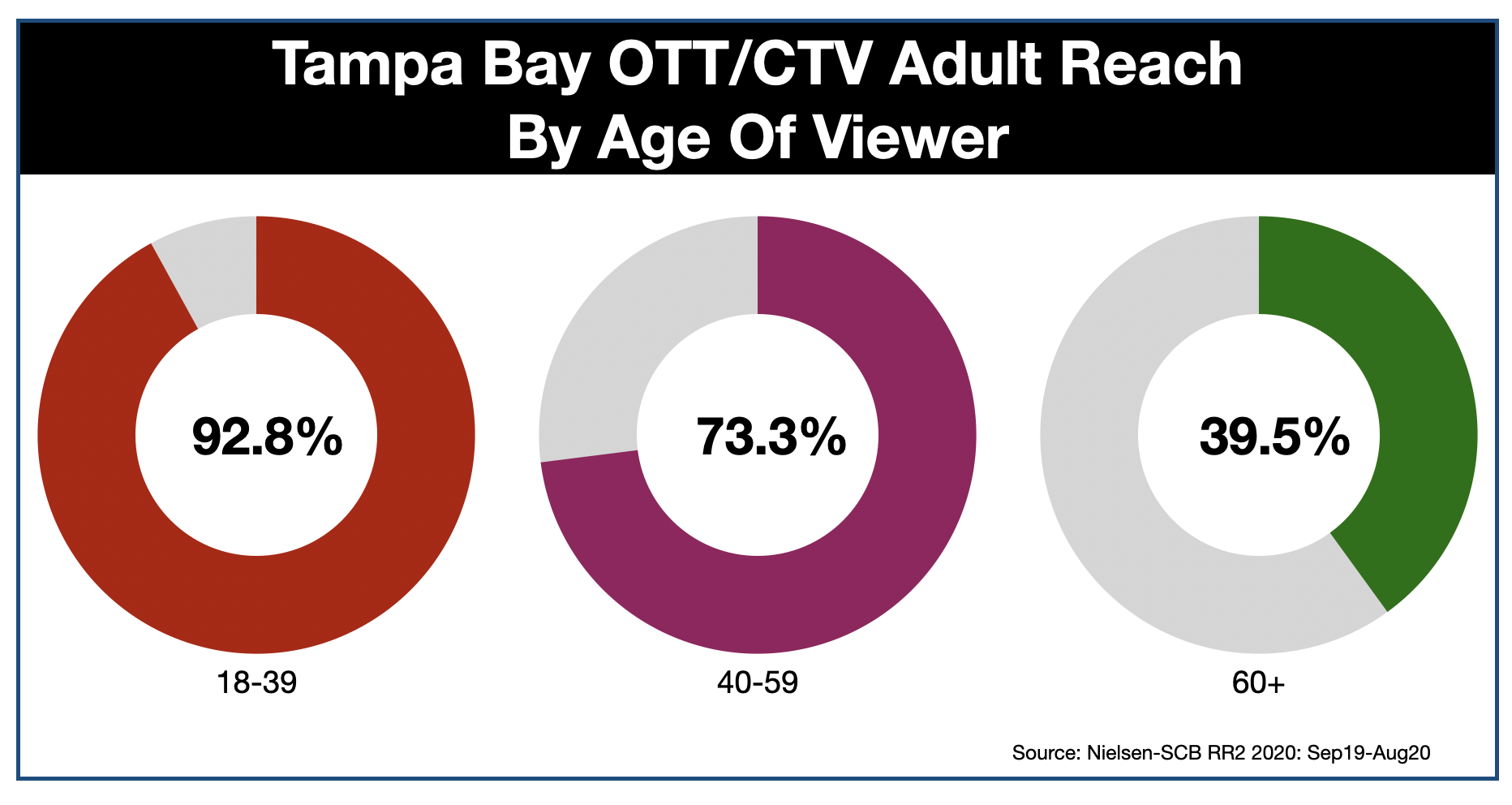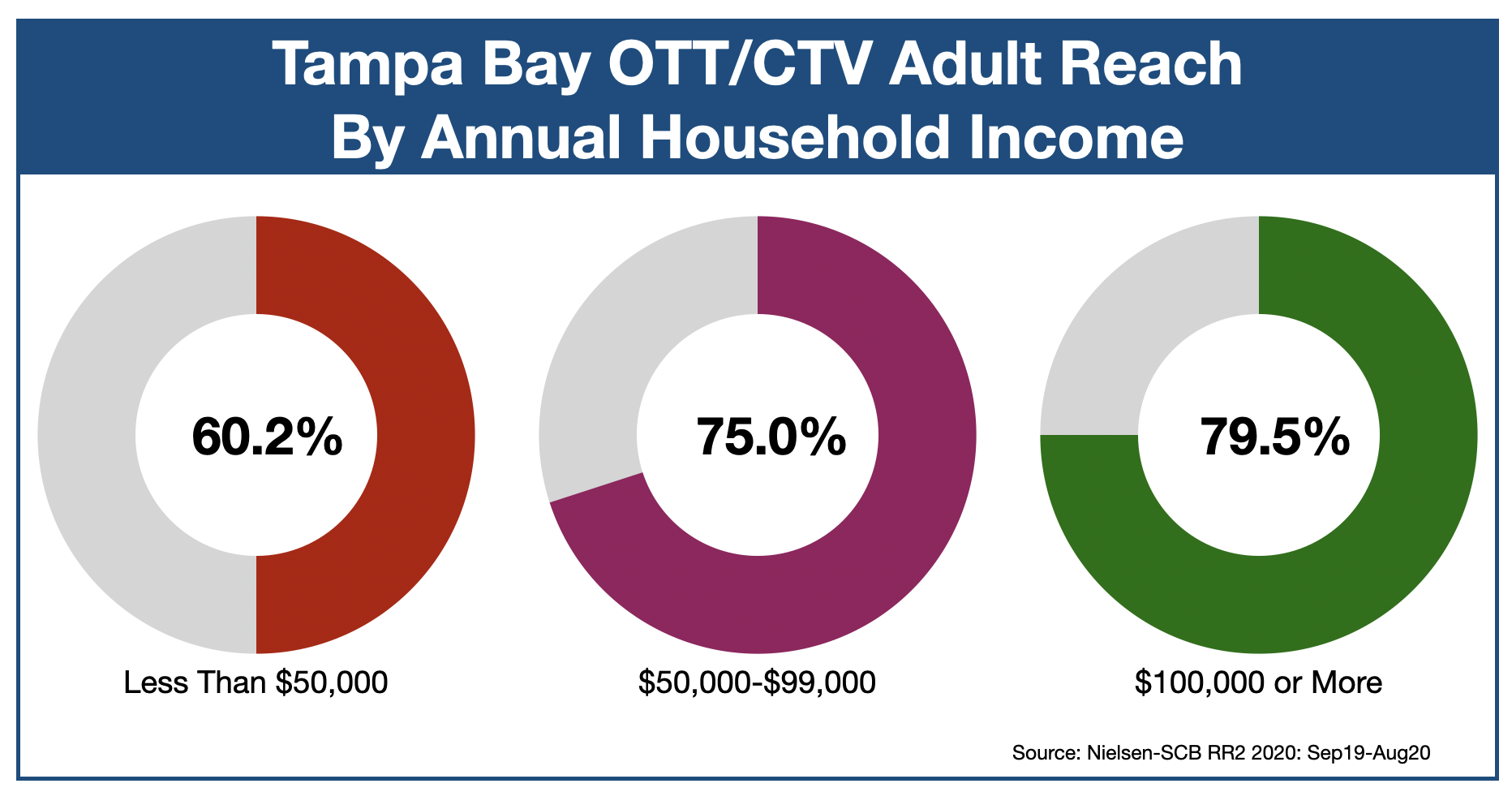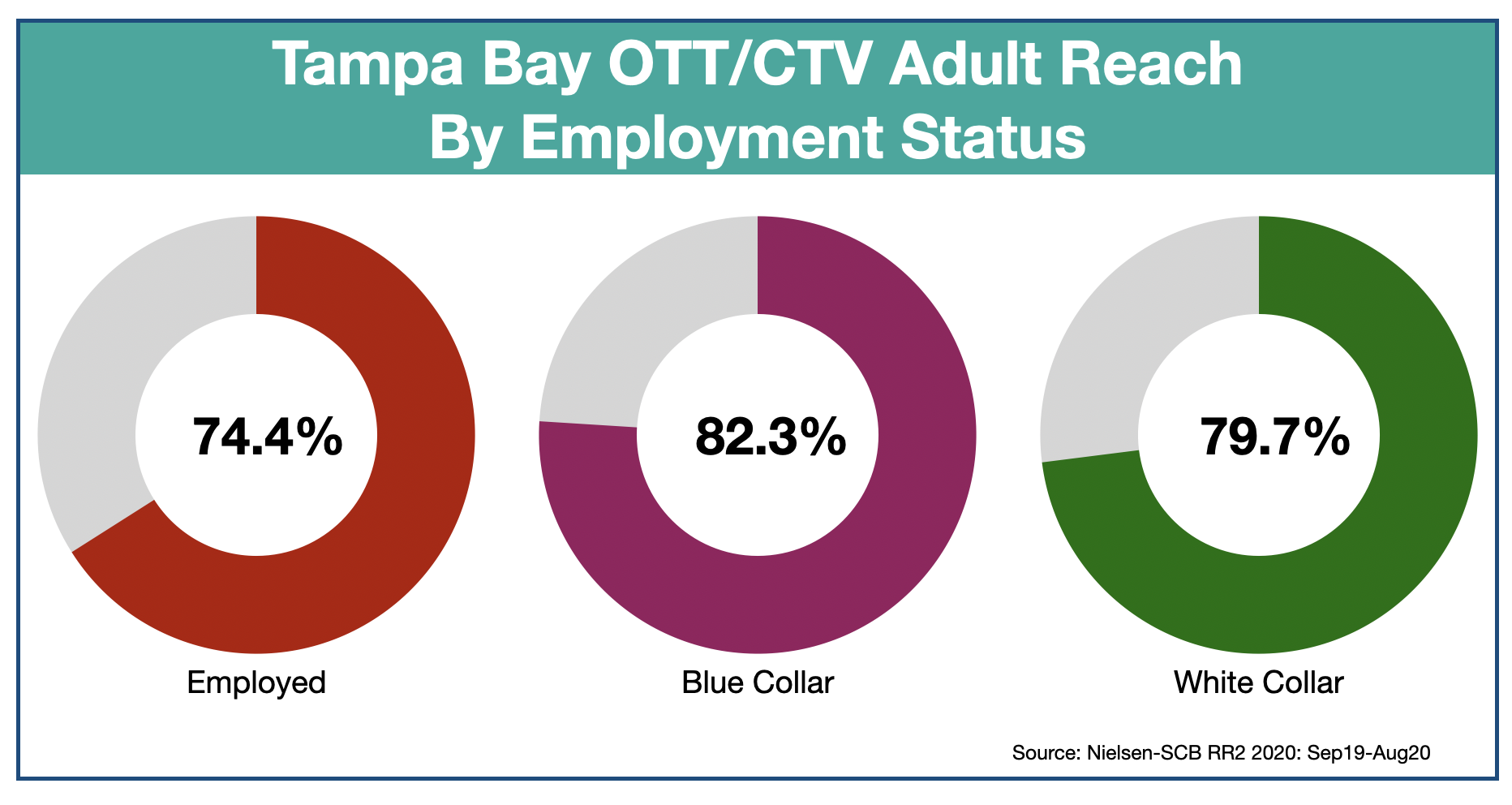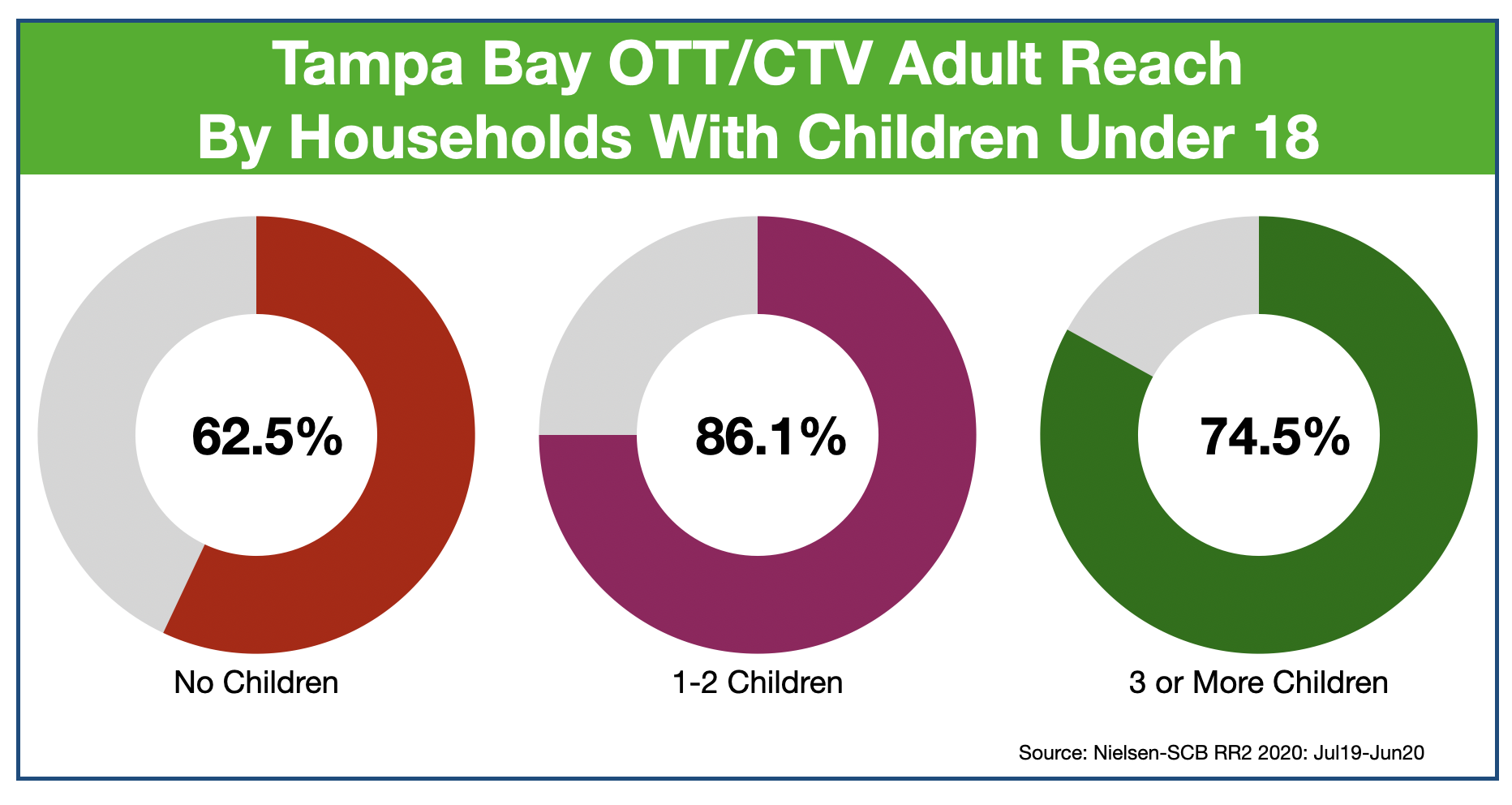 Each week, according to Nielsen, 68.4% of Tampa Bay consumers watch video programs that aren't delivered over-the-air by local TV stations. They aren't coming from a local cable company or by satellite. Instead, these programs are being streamed directly to viewers via an internet connection.
Each week, according to Nielsen, 68.4% of Tampa Bay consumers watch video programs that aren't delivered over-the-air by local TV stations. They aren't coming from a local cable company or by satellite. Instead, these programs are being streamed directly to viewers via an internet connection.
This type of streamed video content is called OTT (Over-The-Top-Television) or CTV (Connected-Television). These two terms are sometimes are often used interchangeably but do have a subtle difference.
OTT generally means the video is watched on a small device like a computer, tablet, or smartphone. CTV, on the other hand, typically means the content is viewed on a smart-TV or a regular television using a streaming device like a Roku or Amazon stick.
In Tampa Bay, OTT/CTV has exceeded the weekly reach of local newspapers and streaming audio services such as Pandora and Spotify. The medium is rapidly approaching the reach of local cable and broadcast TV stations.
Although OTT/CTV is used by adults of all ages, the audience reach tends to be greater among younger viewers.
Tampa Bay consumers can choose to watch OTT/CTV content without advertising from services like Netflix, Prime Video, Disney+, or HBO Max. Because these networks provide commercial-free programming in exchange for a subscription fee, they are referred to as SVOD or Subscription-Video On-Demand.
Other networks offer its programming free (or at low-cost) to Tampa Bay consumers. The trade-off, however, is the content contains advertising, similar to traditional cable and TV. Because these channels make money from advertising revenue, they are referred to as AVOD (Advertiser-Supported-Video-On Demand). The most well known of these channels are NBC's Peacock, Hulu, Paramount+, Fubo, Vudu, and Crackle.

According to IAB, 45% of all consumers who watch OTT/CTV regularly are tuning-in to AVOD networks. This makes OTT/CTV a viable advertising medium for Tampa Bay small business owners to market their goods and services.
 The Tampa Bay consumers who watch OTT/CTV content are remarkably diverse. This allows local business owners to easily target audiences who are most likely to become customers.
The Tampa Bay consumers who watch OTT/CTV content are remarkably diverse. This allows local business owners to easily target audiences who are most likely to become customers.
For instance, each week, according to Nielsen, OTT/CTV reaches well over two-thirds of adult consumers in Tampa Bay who are African-American, White, or Hispanic.
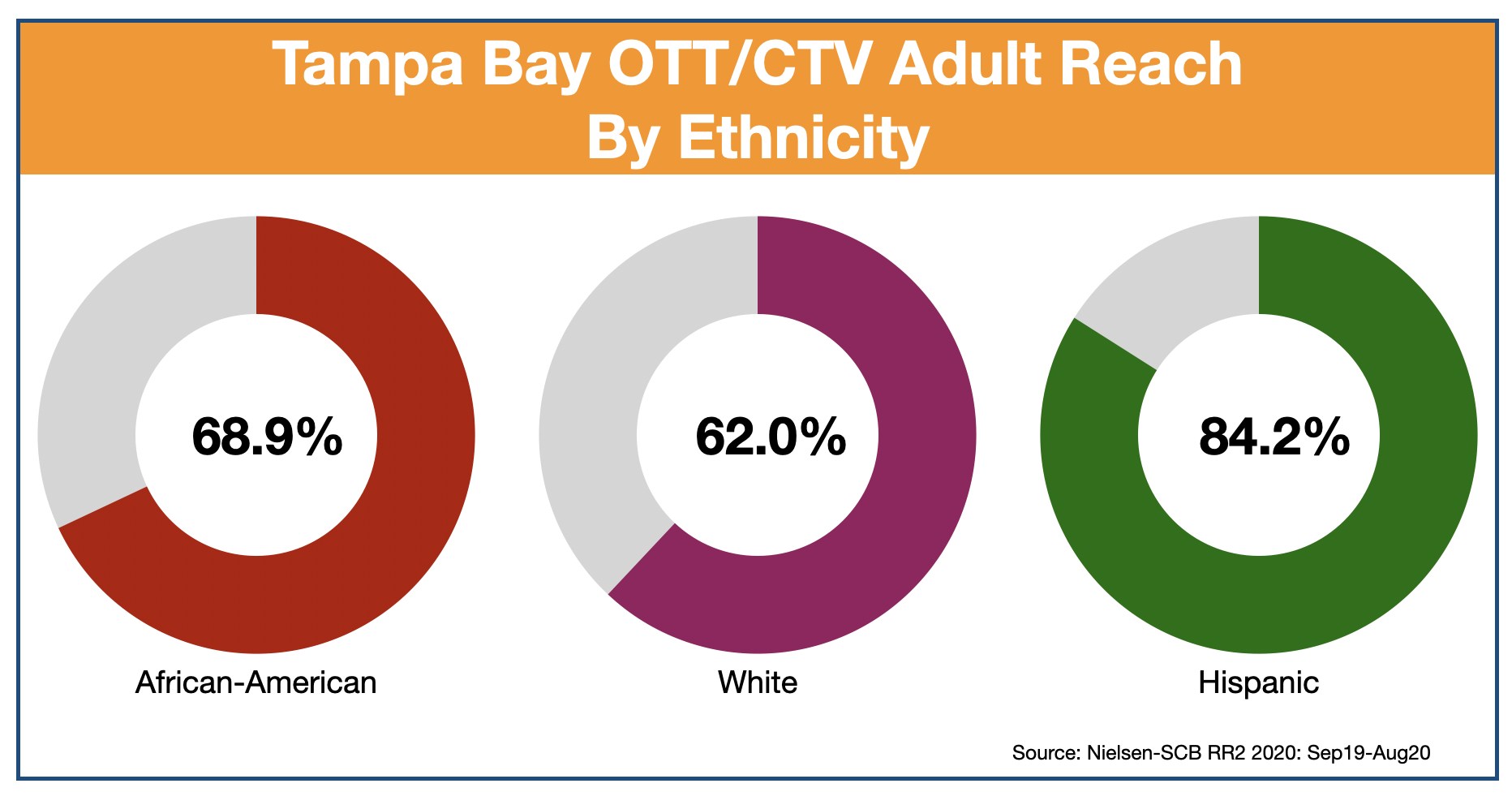 Because many OTT/CTV networks require a financial commitment from Tampa Bay viewers, the reach among consumers in higher-income households tends to be greater.
Because many OTT/CTV networks require a financial commitment from Tampa Bay viewers, the reach among consumers in higher-income households tends to be greater.
In the Tampa Bay area, OTT/CTV reaches a large majority of all adult consumers who are employed. The audiences tend to favor, though, those who have white-collar jobs.
Finally, according to Nielsen, OTT/CTV is more likely to be consumed by adult consumers who have children under the age of 18 living at home.
Perhaps the greatest benefit of OTT/CTV to both Tampa Bay consumers and advertisers is that the medium is portable. Unlike local TV and cable, streaming video services are available anywhere the consumer has an internet connection. In 2020, according to a survey by Leichtman Research, 55% of adults watched video content on a mobile device such as a smartphone or tablet. This up from 46% in 2019, and 33% in 2018.
Adding OTT/CTV advertising to a marketing campaign is not difficult.
Tampa Bay small business owners and marketers can purchase OTT/CTV advertising through several local media companies, including Beasley Media Group. The cost to advertise is based on the number of advertising impressions utilized.
More Advertising Advice For Tampa Bay Small Business Owners
- Tampa Bay Homeowners Plan To Spend Stimulus Cash On Improvements
- Does Anyone Listen To Tampa Radio At Night?
- Grab A Larger Share Of Tampa Bay's Accelerating Retail Spending
- Advertise in Tampa Bay: How Local Consumers Use The Internet?
- 5 Key Advertising Stats Tampa Bay Small Business Owners Should Know
- Advertising In Tampa Bay: Reaching Female Consumers
- How Smart Speakers Affect Advertising On Tampa Radio
